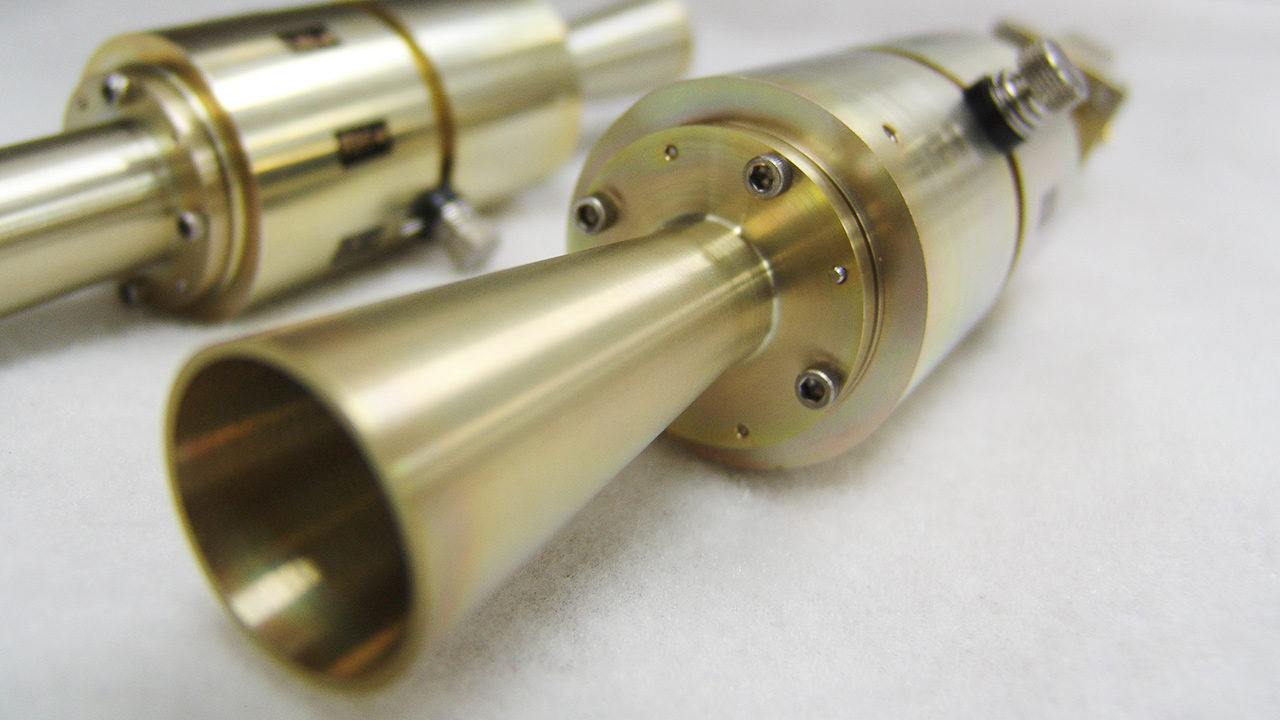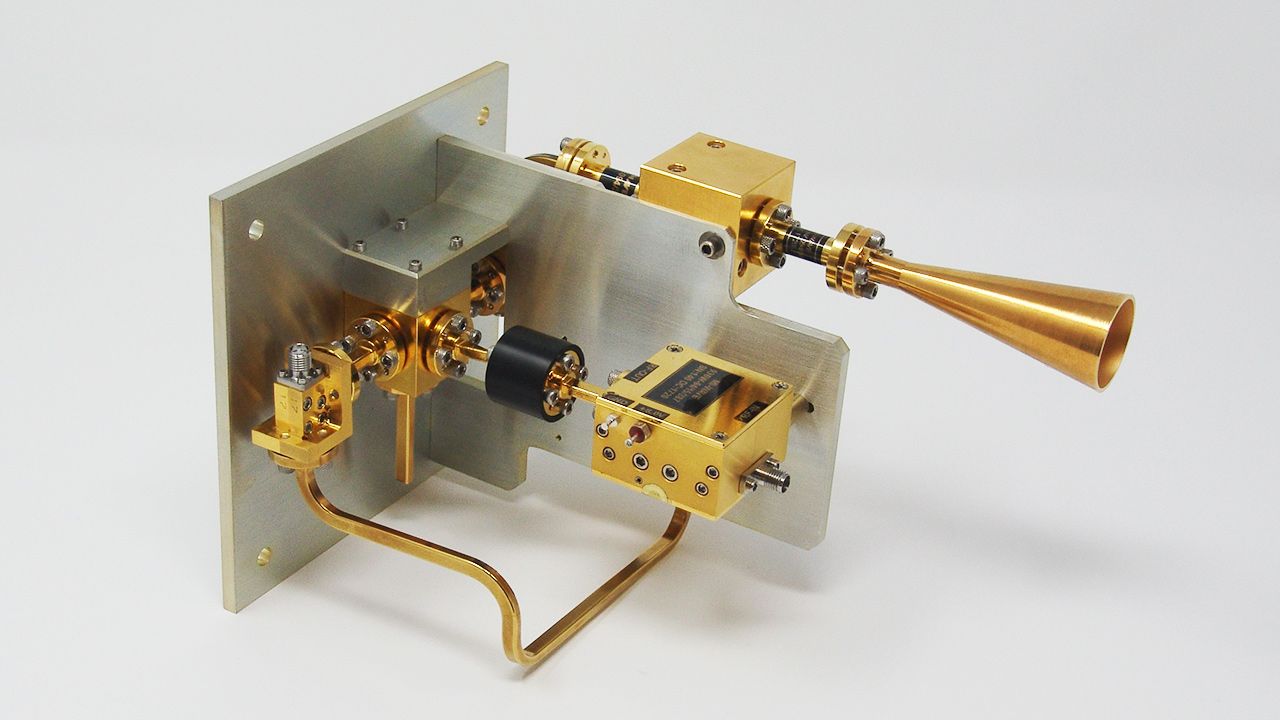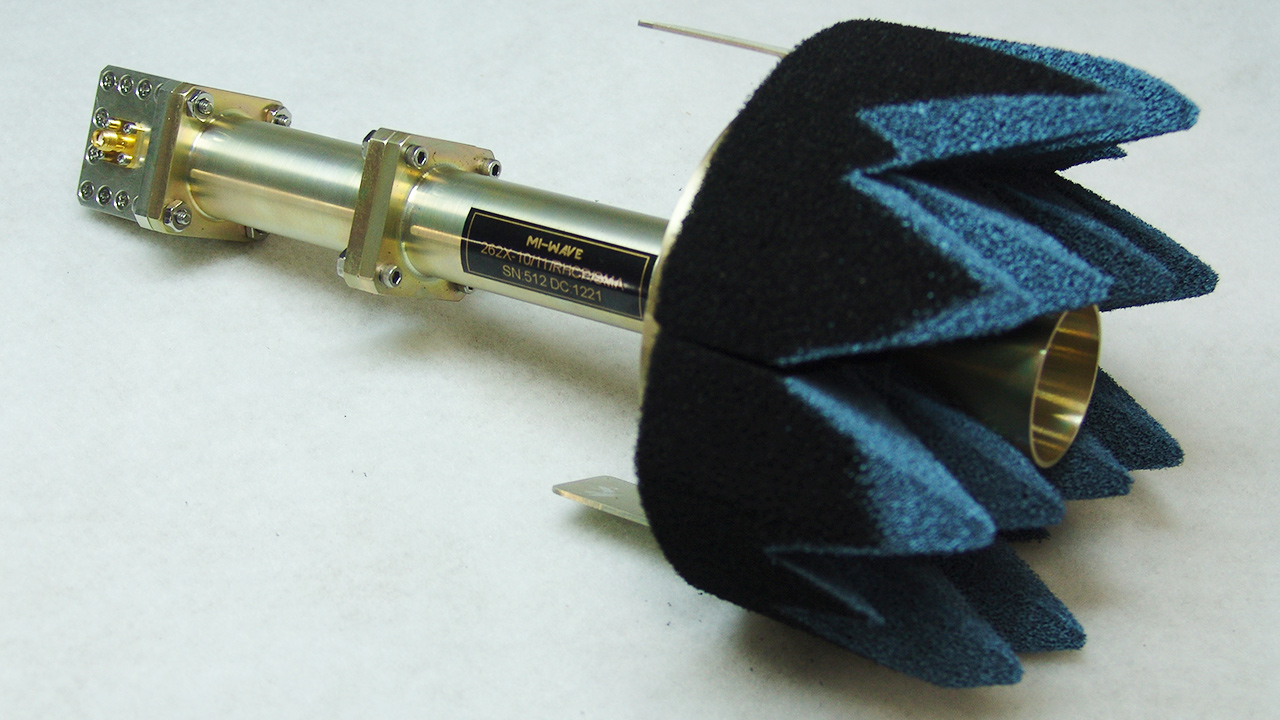Products> Antenna Products > Conical Horn Antennas > K-Band Conical Horn Antennas
Description:
Mi-Wave’s 262 Series k-band conical horn antennas are fabricated with very close tolerances to ensure the precision of every horn manufactured by Mi-Wave. Each unit is supplied with a short section of circular waveguide supplied with a short section of circular waveguide and terminated in a standard round flange.
We know you need and demand the absolute best when it comes to conical horn antennas and we look to provide you with the best solutions possible. Some of the highlights of our conical horns are:
Features
• Nominal Gain of 10, 15, 20, and 25 dBi
• Made with Precise Dimensional Tolerance Control
• Gain Calibration is accurate to 0.5 dB over operating bandwidth.
• 10, 15, 20 and 25dB models are available in all bands. Custom sizes also available.
• Gain calibration is an optional feature.
Applications
Conical horns are also useful as power monitors in radars transmitter test, known-gain radiators in field propagation studies, and transmitting or receiving antennas in test bench application.
• Radar & Telemetry Systems
• Point to Point Communication Systems
*All data presented is collected from a sample lot.
* Actual data may vary unit to unit, slightly.
*All testing was performed under +25 °C case temperature.
*Consult factory to confirm if material, plating, size, shape, orientation and any electrical parameter is critical for the application as website information is for reference only.
*Millimeter Wave Products, Inc. reserves the right to change the information presented on website without notice as we continue to enhance the performance and design of our products.
Outlines & Drawings
View outlines, drawings, data, pictures & more. (Don’t see what you need? Contact us)
K-Band Conical Horn Antennas
Our WR-51 waveguide size Conical horns can be used to experimentally determine the gain of other antennas by using the substitution method. The conical horn and the antenna under test are alternately connected to a well-matched detector system in order to compare their relative power levels. The power level difference is then added to the appropriate level of the calibration curve to determine the absolute gain of the antenna under test.
Conical horns are also useful as power monitors in radars transmitter test, known-gain radiators in field propagation studies, and transmitting or receiving antennas in test bench applications.
Is your conical horn part of an integrated assembly?
Contact us to discuss your needs.








